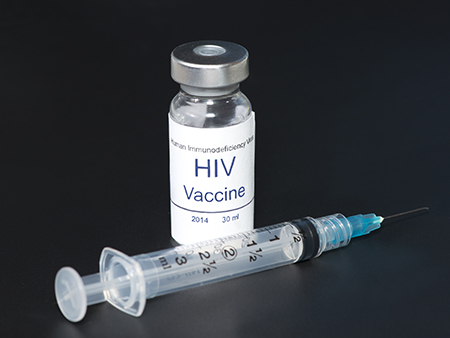HIV vaccine trails shows promise of HIV treatment
In a major step forward for HIV vaccine development, researchers at the Duke Human Vaccine Institute have successfully induced broadly neutralizing antibodies against HIV through vaccination for the first time.

An HIV vaccine candidate developed at the Duke Human Vaccine Institute (DHVI) triggered low levels of an elusive type of broadly neutralizing HIV antibodies among a small group of people enrolled in a 2019 clinical trial.
The findings of HIV Vaccine are notable for two reasons:
1) the inability to induce B cell lineages of broadly neutralizing antibodies (bnAbs) in humans has been a roadblock to HIV vaccine development and
2) bnAbs take years to develop in people living with HIV-1.
The finding not only provides proof that a vaccine can elicit these antibodies to fight diverse strains of HIV, but also that it can initiate the process within weeks, setting in motion an essential immune response.
The vaccine candidate targets the area on the HIV-1 outer envelope known as the membrane proximal external region (MPER). More specifically, the candidate includes a “peptide/liposome immunogen targeting B cell lineages of HIV-1 envelope (Env) membrane-proximal external region (MPER) bnAbs.” Antibodies against this region—which remains stable even as the virus mutates—in the HIV outer coat can block infection by many different circulating strains of HIV.

The research team analyzed data of HIV Vaccine Trail
from a Phase I clinical trial, the HVTN 133 clinical trial. Twenty healthy, HIV-negative people enrolled in the trial. Fifteen participants received two of four planned doses of the investigational vaccine, and five received three doses.
Also Read: R21/Matrix-M vaccine for malaria prevention
Results of Trails
After two immunizations, the vaccine had a 95% serum response rate and a 100% blood CD4+ T-cell response rate. Most of the serum responses mapped to the portion of the virus targeted by the vaccine. Broadly neutralizing antibodies were induced; the most potent of which neutralized 15% of global tier 2 HIV-1 strains and 35% of clade B strains. In addition, the authors noted that “neutralization was enhanced by vaccine selection of improbable mutations that increased antibody binding to gp41 and lipids.”
“This work is a major step forward as it shows the feasibility of inducing antibodies with immunizations that neutralize the most difficult strains of HIV,” said Barton F. Haynes, MD, director of the DHVI. “Our next steps are to induce more potent neutralizing antibodies against other sites on HIV to prevent virus escape. We are not there yet, but the way forward is now much clearer.”
Also Read: Malaria vaccination start in African countries
Other features of the vaccine were also promising, most notably how the crucial immune cells remained in a state of development that allowed them to continue acquiring mutations, so they could evolve along with the virus.
The researchers said there is more work to be done to create a more robust response, and to target more regions of the virus envelope. A successful HIV vaccine will likely have at least three components, all aimed at distinct regions of the virus.
“Ultimately, we will need to hit all the sites on the envelope that are vulnerable so that the virus cannot escape,” Haynes said. ”But this study demonstrates that broadly neutralizing antibodies can indeed be induced in humans by vaccination. Now that we know that induction is possible, we can replicate what we have done here with immunogens that target the other vulnerable sites on the virus envelope.”
